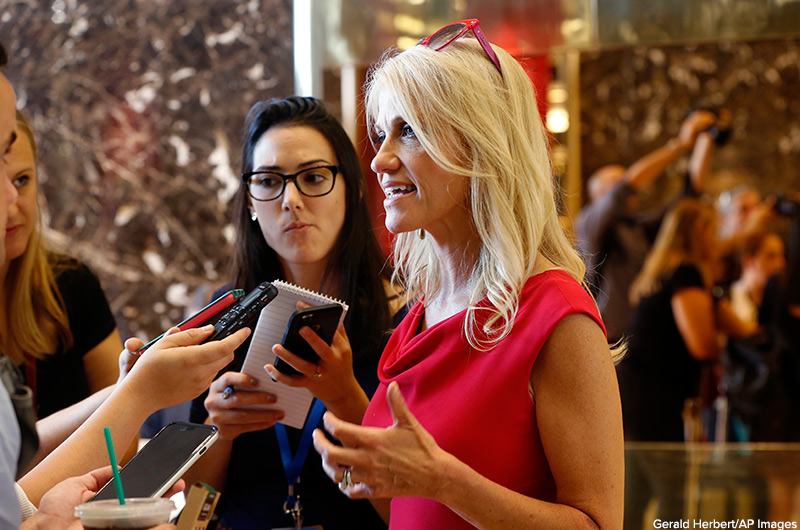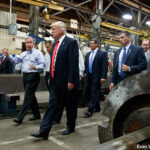
Trump’s Campaign Leadership Shakeup
The Donald Trump campaign has experienced another significant reorganization. This week, Election Central takes a look at the fundamental structure of a traditional campaign, how it operates, and introduces you to Trump’s (latest) key staffers, then explores the challenges they face.
Assembling a Team
A campaign is like a business, with a candidate as its primary “product” (or service). The purpose of the business is to influence as many voters as possible to elect its candidate. The highest-ranking member of the team (aside from the person running for office) is the campaign manager. The campaign manager coordinates all of the day-to-day operations.
These include scheduling, finance (fundraising and spending), communications (advertising, press relations, social media), technology (managing databases), and legal (for compliance and regulation issues). Other staffers include political consultants and a “field department” focused on contacting voters through canvassing (going door to door) and phone calls, usually staffed with volunteers.
Team Trump
Since the reality show/real estate mogul announced he was running for president last year, there have been three distinct phases of Trump’s candidacy, defined by the different campaign managers who guided that phase:
- Corey Lewandowski (February 2015–March 2016) Trump’s initial team was made up mostly of his long-time associates. This was an open rejection of the “traditional consulting class” of previous Republican campaigns. Corey Lewandowski had worked for the Republican National Committee and for the influential conservative political advocacy group, Americans for Prosperity. Trump brought Lweandowski on as campaign manager. His aggressive style seemed a match for Trump (btw reported a story about some of his dealings with crowds at rallies) However, Lewandowski was fired shortly before the summer convention as the nomination process and its final stages of complexity required someone with more experience in that type of campgaigna ctivity.
- Paul Manafort (March–August 2016) Manafort was a more established consultant, with more Washington political experience. As the campaign headed into the summer GOP convention in Cleveland, the Trump campaign needed that experience to organize the big media event. Trump hired Paul Manafort, whose experience in politics dates back to the 1970s. Manafort provided strategy to Gerald Ford and Ronald Reagan and played a significant role in the campaigns of George H.W. Bush and Bob Dole. Attempts at making Trump more “presidential” were short-lived, as Trump was reportedly unwilling or unable to follow the advice of his new team. Shortly after reports that Manafort was not trying as hard to challenging the nominee, he announced his resignation.
- Steve Bannon (Current) This former investment banker left his job as a top executive of conservative news Web site Breitbart.com to advise Trump. The Web site has been both an enthusiastic supporter of the mogul as well as a critic of prominent Republican figures such as Paul Ryan. Bannon has the reputation as a “win-at-all-costs” kinds of guy. Another high-profile addition to the staff is former Fox News chairman Roger Ailes. Alies recently resigned his position at the conservative news network in light of sexual harassment charges made by several female Fox News staffers. While not serving in a formal role, Ailes (who served as a media consultant for Richard Nixon, Reagan and Bush, Sr.) is rumored to be helping Trump prepare for the upcoming debates.


